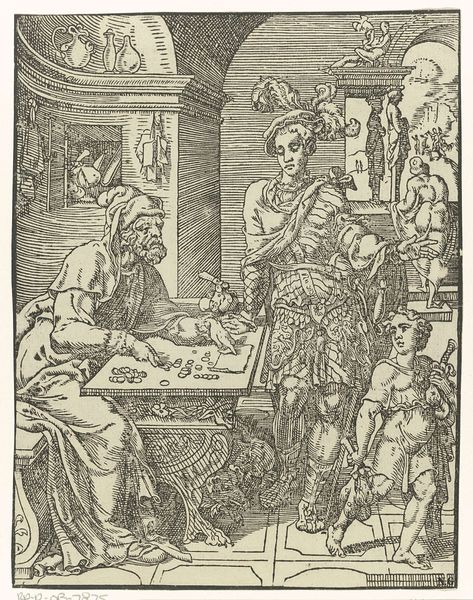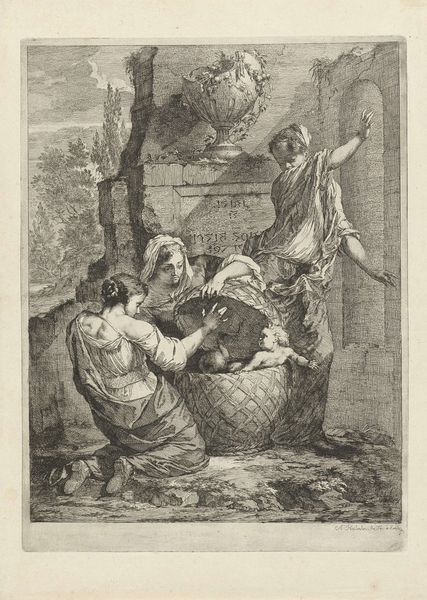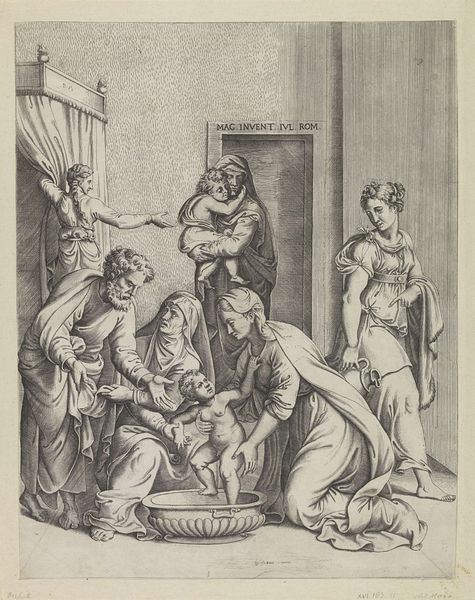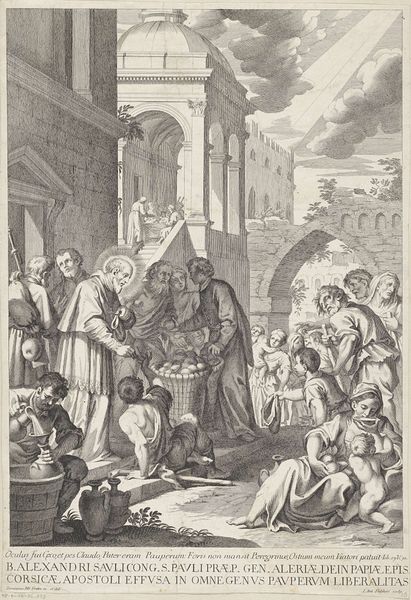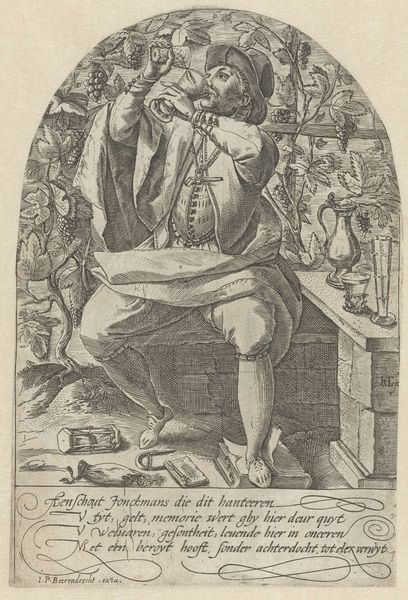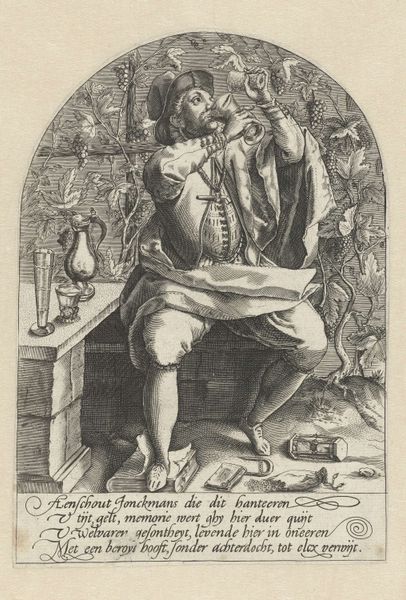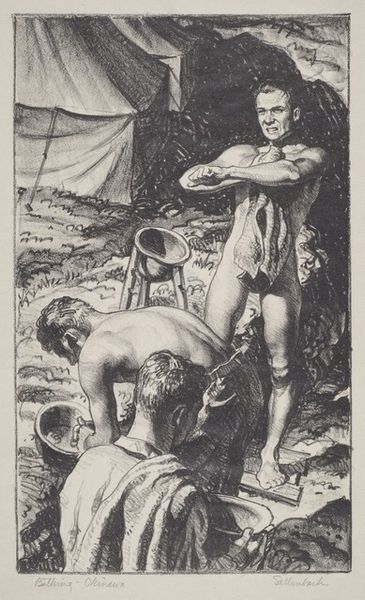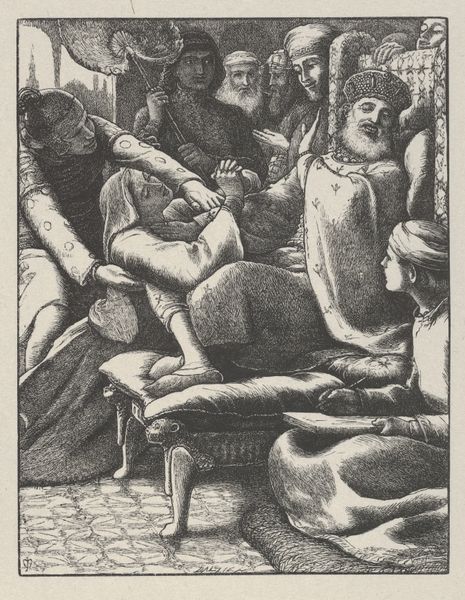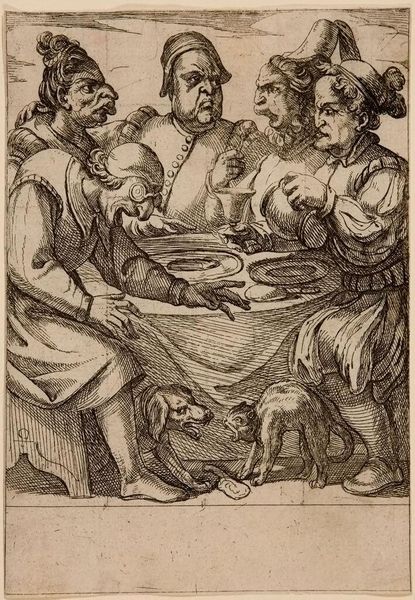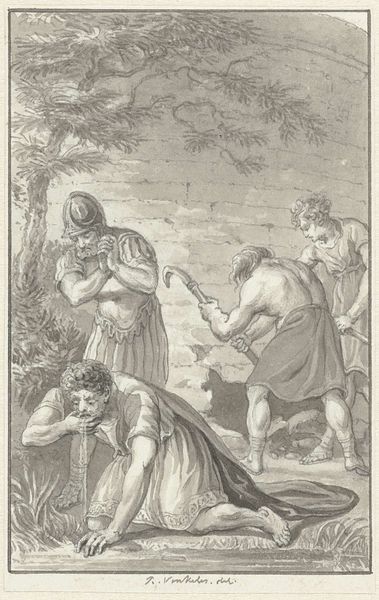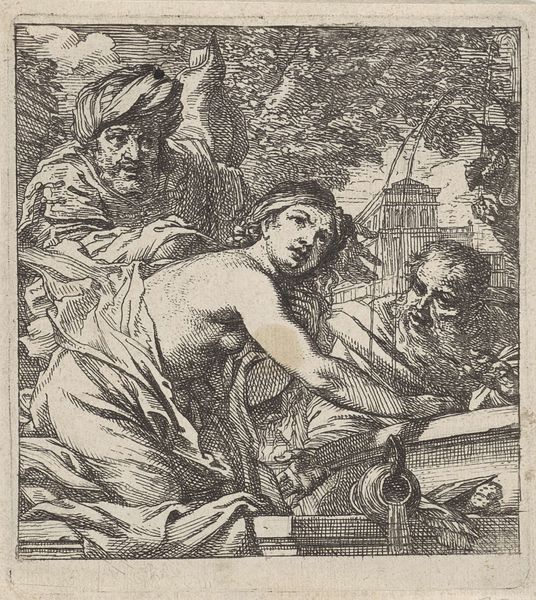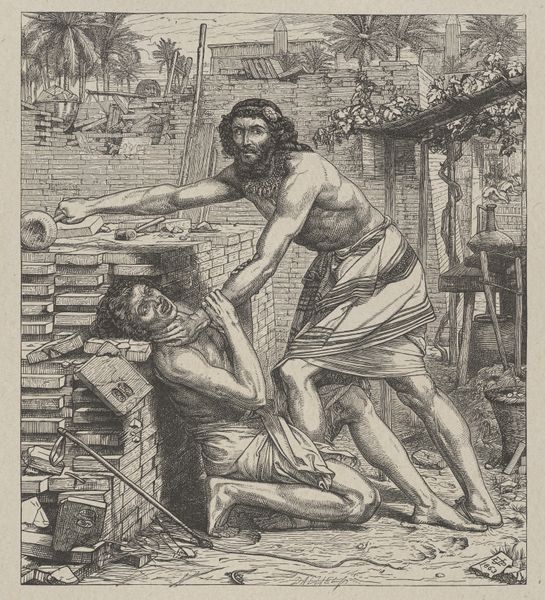
print, etching
#
narrative-art
#
baroque
# print
#
etching
#
genre-painting
Dimensions: height 163 mm, width 118 mm
Copyright: Rijks Museum: Open Domain
Curator: Let us begin. Editor: Here we have Romeyn de Hooghe’s etching, "Drinkgelag", from sometime between 1655 and 1708. The level of detail is remarkable; it almost feels like looking at a photograph. What strikes you most about its composition? Curator: Observe the formal arrangements: The figures are deliberately placed to create a visual hierarchy, leading the eye through distinct zones of action and repose. Focus on how the interplay of light and shadow modulates across the surface, defining the forms. Notice the textural contrasts between the clothing and the ground; these contribute to the etching's overall dynamism. Do you see any patterns? Editor: The strong diagonal created by the figure raising the glass seems to bisect the piece, and that cherubic figure feels like it is about to fall from its perch! Curator: Precisely! These diagonals generate a sense of movement and visual tension. De Hooghe's application of line weight is deliberate, isn't it? Thicker lines delineate primary forms while thinner, more delicate lines detail secondary ones. It gives depth and form in lieu of the color we expect from visual artworks. Editor: So it is not just about the image portrayed, but the mechanics of how the piece is built. The technique is an integral part of the piece. Curator: Indeed. Every stroke contributes to the structured aesthetic we’ve seen. What the figures are doing is almost irrelevant; the success of the work relies on the careful distribution and execution of lines and shadows. Editor: That’s a fascinating lens. I admit I am more accustomed to seeing these pieces in the context of Dutch genre paintings. I appreciate how focusing on composition and technique allows you to interpret the image in a vacuum! Curator: Correct! By disregarding subject, and paying close attention to De Hooghe’s formal mechanics, we gain fresh insights into how meaning and intention emerge from this piece. Editor: Thank you!
Comments
No comments
Be the first to comment and join the conversation on the ultimate creative platform.
